Caffinol…? That’s old school. Have you tried any of the Polyphenol developer alternatives?
By now most everyone who follows analog/film photography has heard of or has seen film developed in Caffenol. In the mid-90’s at RIT the chemistry majors were presented with a class project: If kodak was shut down by the EPA and you had some film to develop, how would you do so with stuff under your kitchen sink? The class discovered that Coffee, Vitamin C (Ascorbic Acid) and Wash Soda (Sodium Carbonate) would develop film. Coffee contains Polyphenols in the caffeic acid, Vitamin c is a super-additive and the wash soda( sodium carbonate) is the alkali accelerator .
Since then we have seen people using beer, red wine and other “hipster” variations. I can think of better things to do with beer and red wine at that price point and while I like the smell of coffee by itself, Caffenol stinks when you add the carbonate – it smells like an old burnt forgotten pot left to boil dry… just nasty!
My Philosophy of Home brewing
I hang out & post in a few Facebook groups and try to encourage people to mix their own chems if they have the slightest inclination. It angers me when people post questions regarding alternative home brews and others reply with derisive remarks like “oh why bother? or ” the results look grubby & inferior” or even worse, “if you can’t afford D76 maybe you should consider a less expensive hobby”.
Photography is SUBJECTIVE. I can tell you what my TASTES are, but I have NO business saying any ones images are inferior!
Why try Polyphenol Developer Alternatives?
Recently with COVID concerns many resellers had shipping interruptions. A few stores said no more shipping Rodinal (caustic ground freight restrictions). Spotty backorder situations were hitting users here & there. But, aside from these temporary supply inconveniences I still site the following reasons to consider making your own chems:
- Some of the components can be had freely
- The quality is not compromised
- Experimenting is fun
- Your darkroom can smell wonderful
- Concerns about toxic substances are lessened – so less worries about skin dermatitis or carcinogens.
What’s in YOUR garden or spice rack?
Let’s dive into that first Bullet Point above – the free components. Who gets Instant Coffee for free – or beer or wine? Nobody I know. But there are 35 other common herbs, spices & foodstuffs that have more polyphenols than coffee, I live in the very “spartan” desert of Southern Arizona and actually had 3 sources of polyphenols in my yard. We planted a rosemary bush a few years ago as my wife likes to add a sprig to roasts & stews. Two indigenous trees, Mesquite and Palo Verde produce seed pods seasonally and they contain a lot of polyphenols. I literally have maybe 50lbs of mesquite seed pods I can rake up & bag up laying in the dirt at the moment. 10g will process a roll – so will 5g of fresh rosemary or 2.5g of dried. It doesn’t take much.
Here is a table of commonly found items and their polyphenol content. That content column is MG per 100G
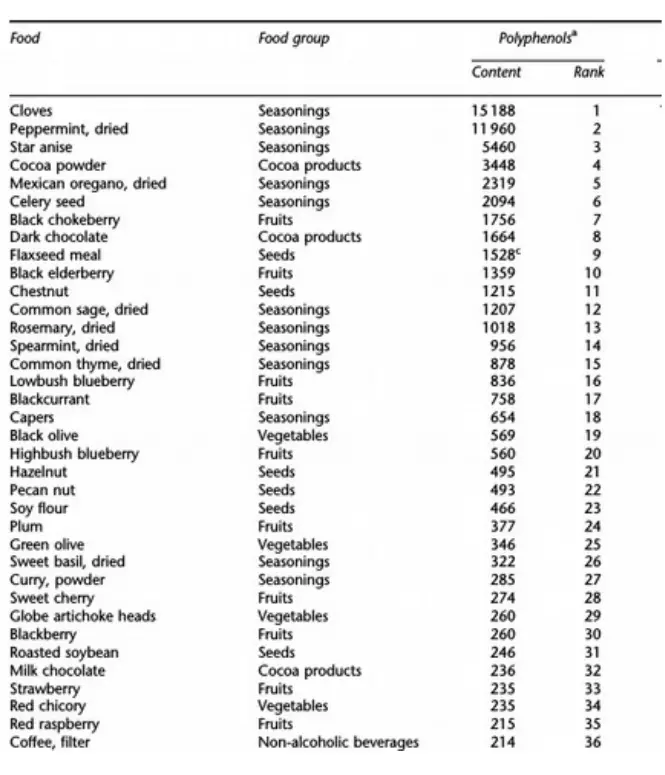
The math they told you that you’d never use…
As we see from this table coffee is ranked #36 and cloves #1. One of the standard Caffenol formulas calls for 15g Carbonate, 2.5g ascorbic and 10g instant coffee for 300ml of water for a single roll. How much Clove might be needed? If we divide the 214mg/100g content of the coffee into the 15,188 of the clove then we might need 1/70 the amount of clove to coffee. Keep in mind that using home methods of hot water steeping/making tea of the desired substance we cannot extract EVERY drop of the goods from the target item. 10g of Coffee divided by 70 is roughly 0.15g of cloves. I made an educated guess and used 0.2g cloves , and the same 15g carbonate and 2.5g ascorbic acid (vitamin c) with the 12 min caffenol time and achieved this:
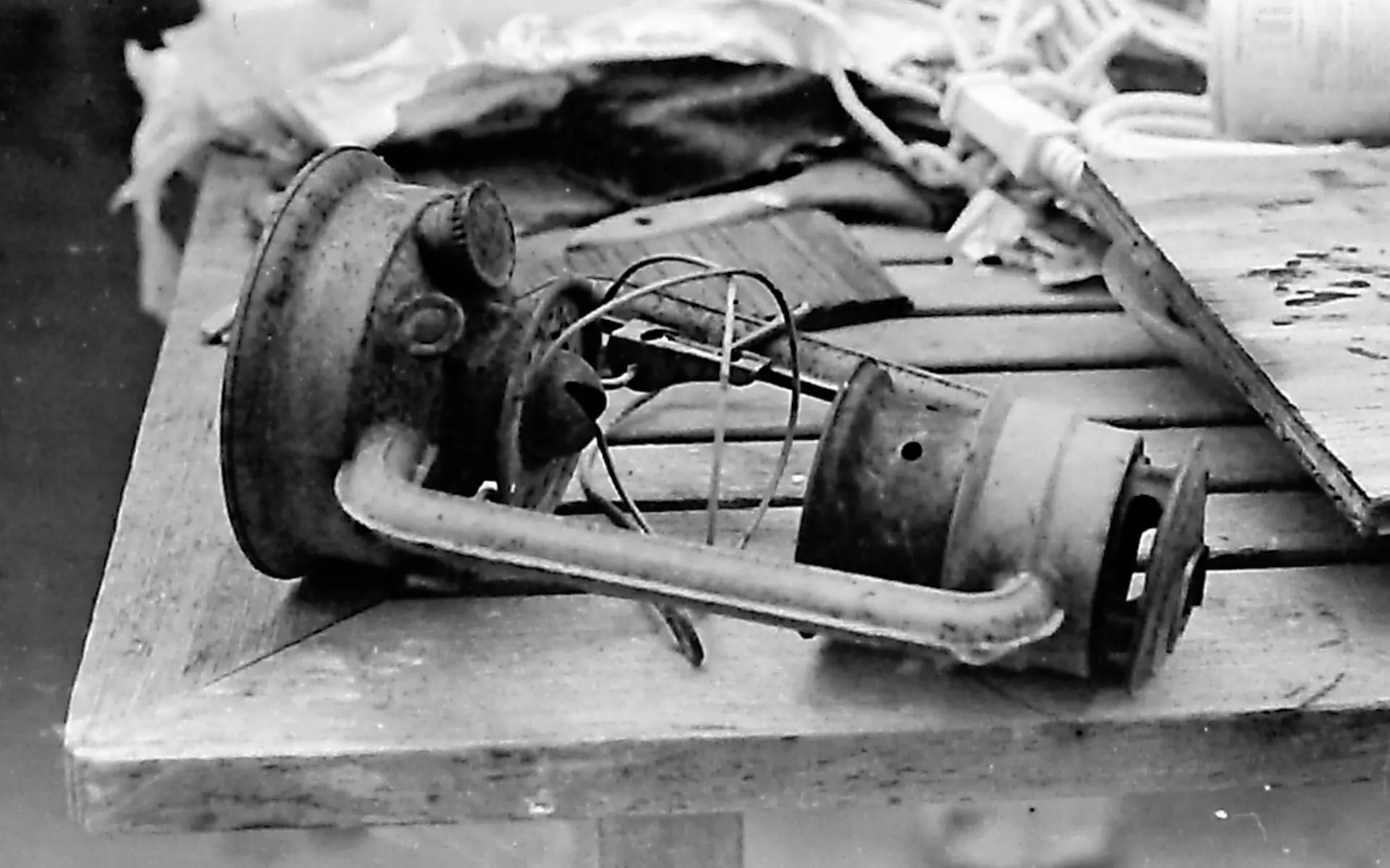
Expired Soviet Mikrat 300 from 1981. Not bad. The cost of 0.2g of ground cloves from my kitchen spices along with 2.5g of vitamin c powder ($18/kg on amazon) and 15g of Arm & Hammer Wash Soda is fairly negligible and if you like the smell of cloves it was very aromatic.
Varietal Samples
What about free garden stuff? Let’s look at the rosemary shrub I mentioned earlier . Rosemary is 1018 vs the 214 for Coffee—about 5 times as potent.. Using the same math it would be assumptive that I would need about 2g of dried rosemary I took 2 sprigs that weighed 5g total and dried them for a week—dried weight was 2.5g. I boiled these for a tea and added the same content of the carbonate & ascorbic and got this:
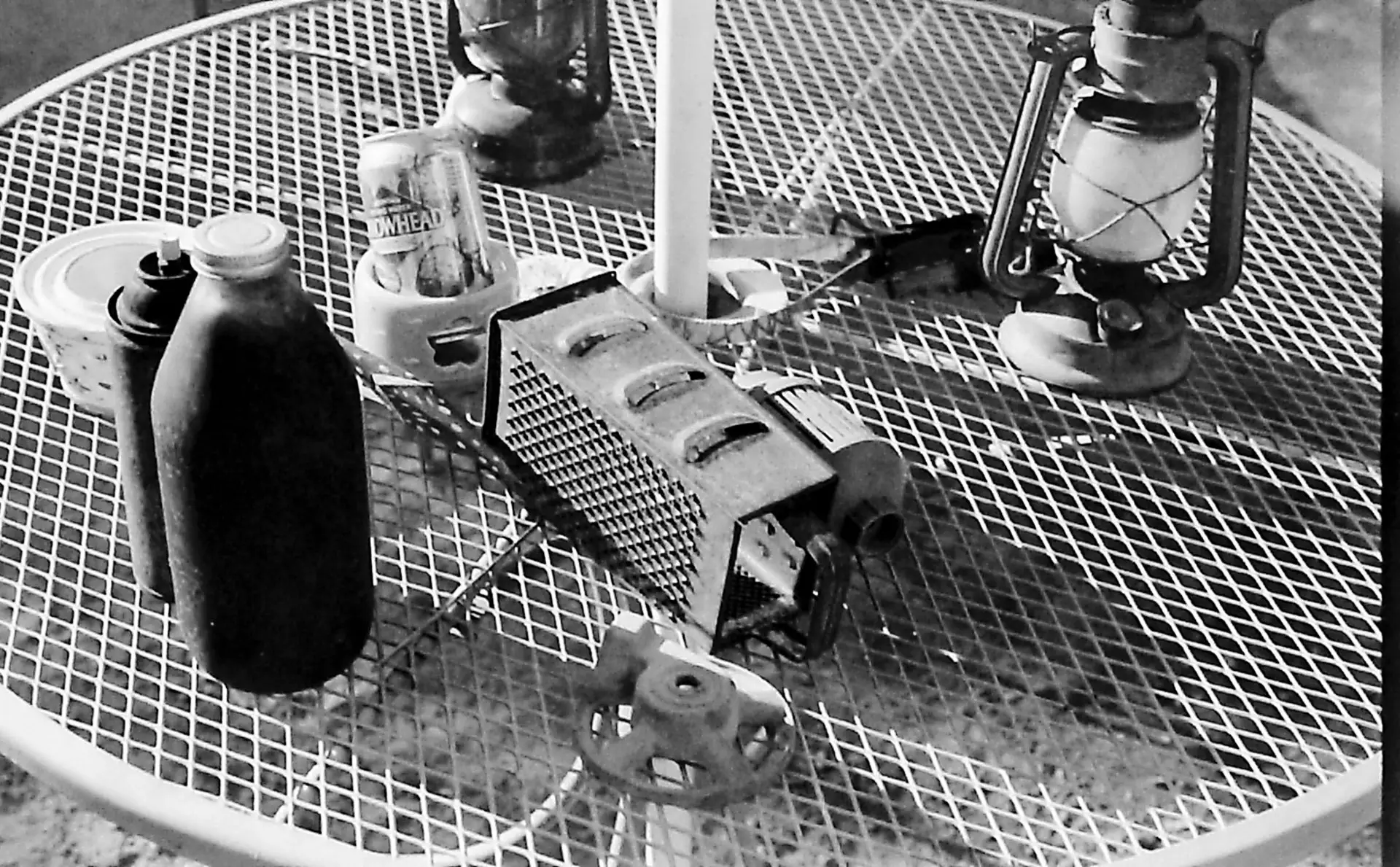
Now, one word on the different polyphenols is that you will likely have to play with your times. Rosemary was VERY active and the time for this was only 8 minutes. It also had a very pleasant smell.
Mesquite seed pods—slightly sweet tea smell:

Palo Verde—same light sweet smell:

Aside from speed properties we can see that some will impact contrast as well
Menthol Crystals—very strong mint smell (my wife loved it):

The Menthol Crystals were a suggestion from a chemistry student who stated in one of the facebook forums that menthol was chemically akin to metol menthol chemical structure similar to metol that’s why I’m curious about it, though it has one OH binding site compared to Metol. For a few bucks I bought some menthol crystals and 0.7g works well for a roll of film. You can make a mint tea from leaf but I figured if the crystals didn’t work I could add some to my hand sanitizer.
So, in closing, you have a lot of choices. Many may be free from your garden or at a very low price from your grocery store. Just substitute the coffee in a caffinol formula & plug in any one of a number of other sources of polyphenols. What grows well or is readily available in your country? Curry in India? Cloves in Indonesia, Mint in a British garden, Basil & Oregano in Italy, Thyme in Germany & so on. Experiment and have fun in the process.
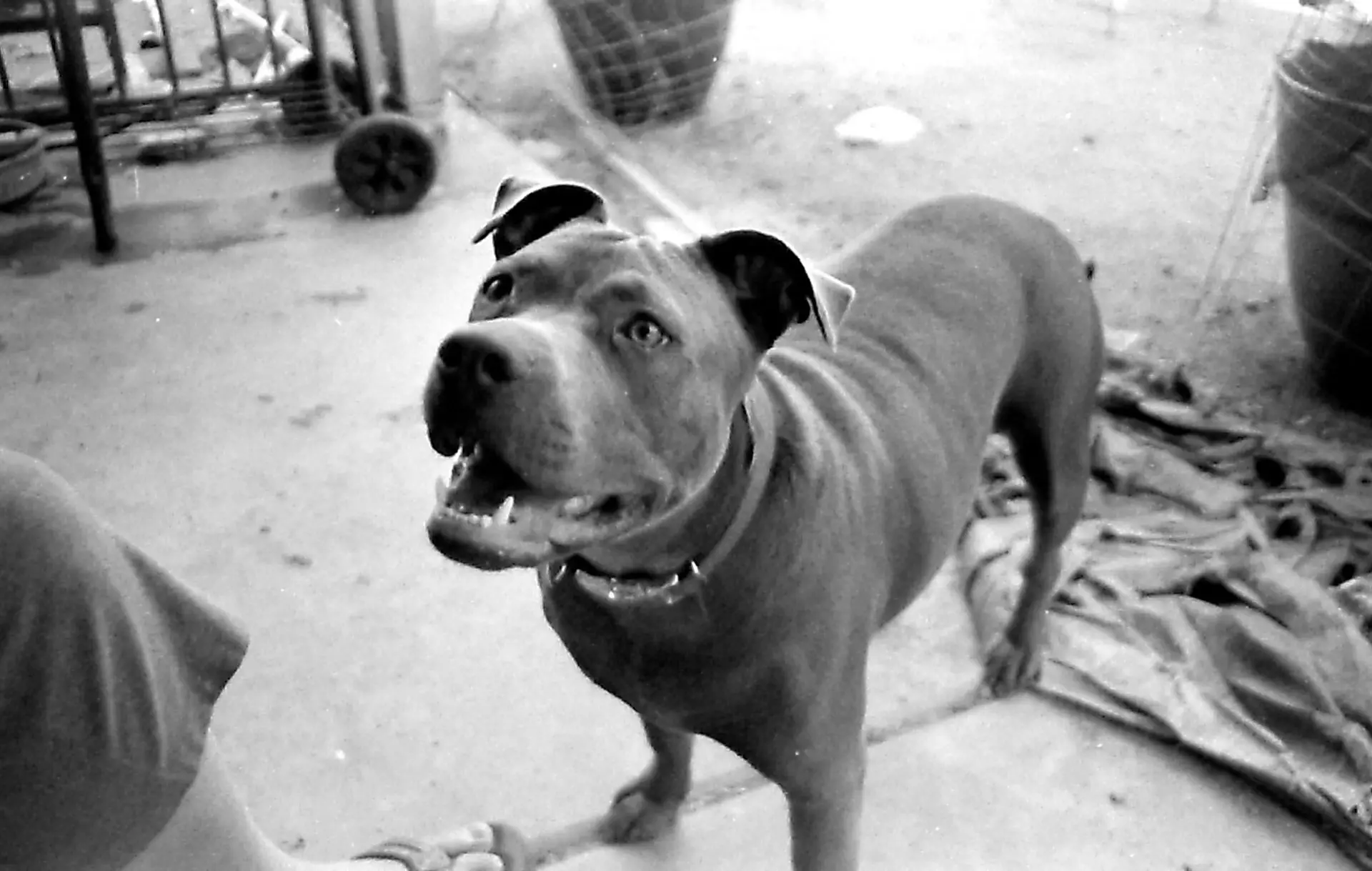
Some obligatory disclaimers:
Don’t defoliate an area and be a pig- snip just what you need and leave the plant to recover from the pruning
Don’t trespass into someone else’s garden (ask first). Some public lands it’s a BIG no-no to take anything.
Some people will also try to suggest that you can use just ascorbic acid & carbonate to process film–these other substances do nothing. In answer to that I attempted a test in just the 15g of carbonate and 2.5g ascorbic and the outcome was very sub-standard. Underdeveloped with muddy tones and a lot of base fog. Using Caffinol as the base line and using the exact same amount of carbonate & ascorbic my observations were that rosemary cut the time in half and could be used to push film. Palo Verde boosted contrast. Cloves gave a deep black and more grain using same time as caffinol. Menthol crystals needed more time and had a very clean base. If these other substances did nothing wouldn’t the outcomes be consistent if the amount of carbonate & ascorbic were the same? While some of these on their own will not trigger development they react with the ascorbic and trigger super-additivity. Just like Xtol has ascorbic AND Phenidone or 510Pyro has ascorbic AND pyrogallic acid–it makes a difference.
Daniel Keating
Tucson Az USA
12.31.2020– Footnotes/additional info on using menthol crystals. This mix works WITH some important caveats. Menthol Crystals melt at 95F/35c and dissolve easily in alcohol. The issue is that if you put the alcohol dilution in COLD water (normal 68f/20c for B&W) the menthol wants to start congealing again. In my tests I still had development but with some films I had what I would call “abrasions” or scuffed emulsion. I have retested that problematic film and came up with these procedures and cautionary:
Mix a 10% solution of denatured or grain alcohol and the menthol crystals. That is to say, any mathematical permutation of 100ml alcohol to 10g of menthol crystals. I use recycled kombucha bottles and opted to use 400ml alcohol to 40g of the menthol crystals, The menthol stays in solution–no issues. In previous tests the development times were long compares to the Rosemary. The following procedure resolves the excessive time and the emulsion damage.
Heat 300ml water to 100f/38c
15g sodium carbonate-stir to dissolve
2.5g ascorbic acid-stir to dissolve
7ml of the 10% solution of alcohol/menthol
The “tropical” temperature will allow the menthol to stay in a liquid form and cut dev time substantially. The film I had issues with was some Mikrat200 soviet film. Other films also required long times at the cooler temps but this film did NOT do well in the mix at all. Using the very warm water and times of 6 minutes I achieved the following:
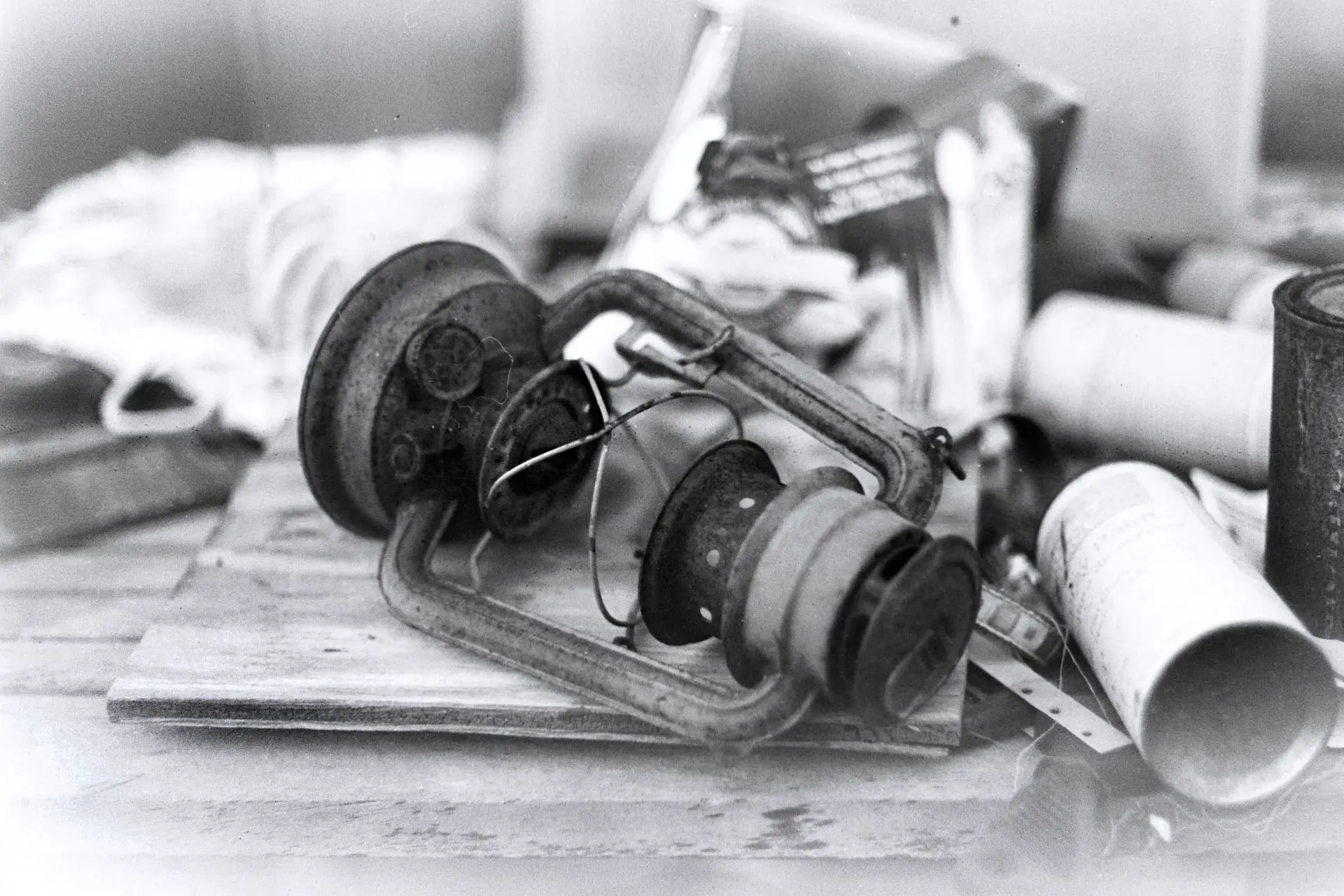

Obviously, this is but one film type. I let the mix cool a bit and the menthol started to congeal– I tested another short snip and the previously mentioned damage manifested itself in spots. This is why the warm mix is critical to it’s success. All & all, I’d say your best bet is going to be Rosemary, Ground Cloves and Curry powder to my eye.

Footnote: one reviewer was questioning if my negs were thin/under developed and if I was salvaging in post scanning… NO. Here is some Orwo DP7 from the 90s. While it has some base fog from age I wouldn’t call it under-processed. Green Tea polyphenol.
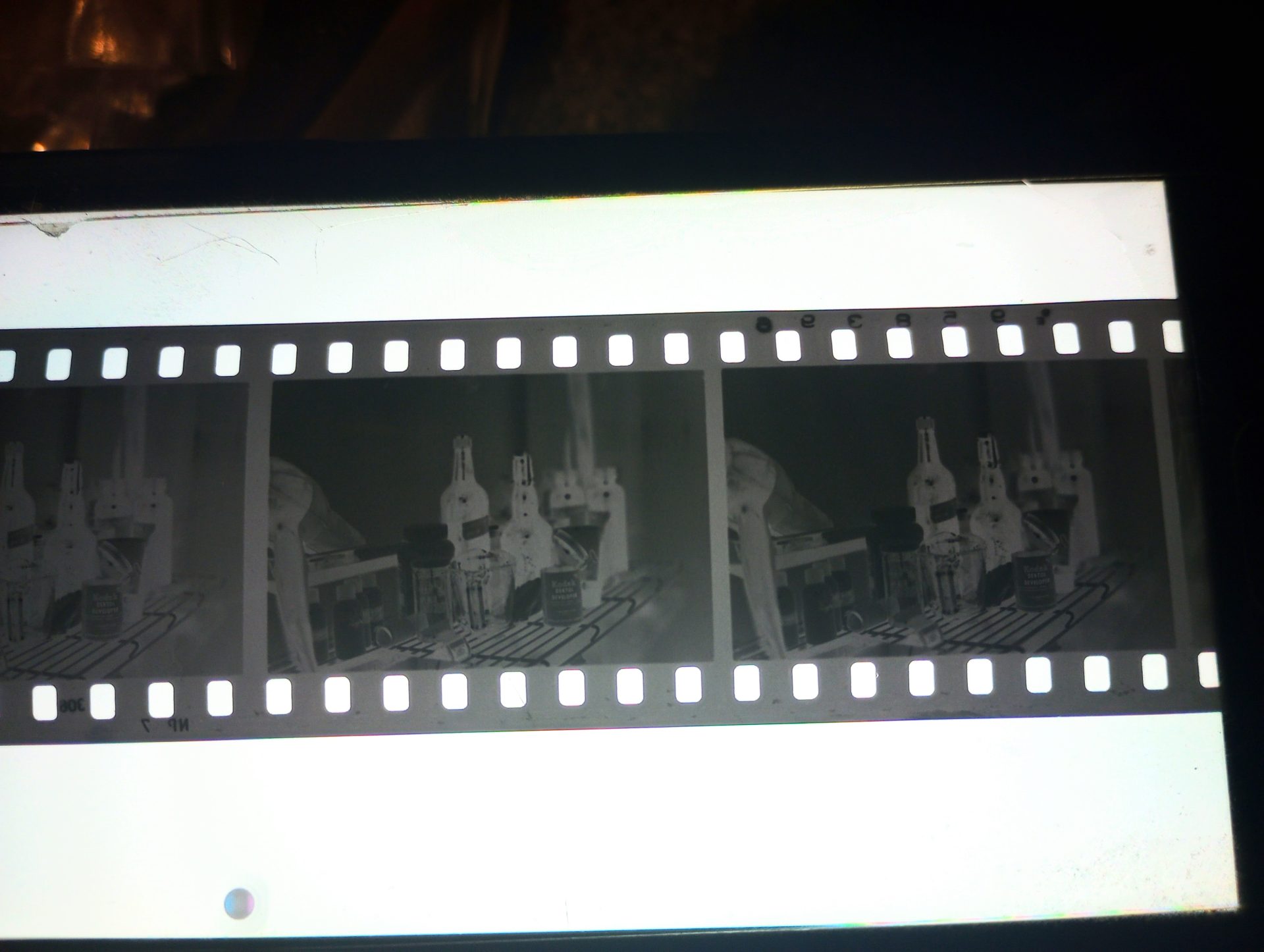
Share this post:









Comments
Murray Kriner on Polyphenol Developer Alternatives – A World full of Options – By Daniel Keating
Comment posted: 18/08/2020
Respectfully,
Murray
Stephen J on Polyphenol Developer Alternatives – A World full of Options – By Daniel Keating
Comment posted: 18/08/2020
Personally, I have experimented with home made developers for both black and white and for colour (c41). I didn't have a particularly enjoyable time with the coffee method and as you say, the pong was staggering.
One that I had success with and have used as a stand processor and in a more concentrated hands on approach is "Parodinal", which is basically a copy of rodinal using paracetemol as the active phenol, 30 caplets crushed to powder, with the other fairly traditional components works and keeps as well as shop bought Rodinal.
The c41 process is still an ongoing experiment and any success has been marred by my lack of a proper understanding (or possession) of a good bleach/fix replacement. I have now resorted to buying the Cinestill powdered c41 kit, and whilst the dev part is still fresh, I am using that. The blix does not go off in the same way that the dev does, so I will be able to use the Cinestil blix with my home made dev, which according to the various blogs that I used as reference, has a far longer shelf life than the commercially made kits.
NB: I have spent quite a lot of dosh on some pretty sinister looking chemicals, some with skulls and crossbones attached, so I am doing this more for the interest and delight that messing around like this causes, than for economy.
As for the commercially available chemicals, I usually use HC110, Rodinal, or my fall back for known faulty camera work... Diafine, which is utterly fool proof.
Comment posted: 18/08/2020
Rachel Brewster-Wright on Polyphenol Developer Alternatives – A World full of Options – By Daniel Keating
Comment posted: 18/08/2020
I have been looking at alternatives for photography chemistry for a long time and am always really interested to hear of other substances I've not tried before!
I wondered if you have any experience or thoughts on the alternatives to the fixers we tend to have to use? I have experimented with salt myself, but would be really interested to hear about your experiences on this too and if you have any advice to share!
Thanks again,
Rachel
Comment posted: 18/08/2020
Neal A Wellons on Polyphenol Developer Alternatives – A World full of Options – By Daniel Keating
Comment posted: 18/08/2020
Martin on Polyphenol Developer Alternatives – A World full of Options – By Daniel Keating
Comment posted: 18/08/2020
s there a specific order in which you have to prepare things? IIRC I read that somewhere with coffeenol. Because some ingrediants do not dissolve well when not done in the right order. I recall that from memory so I can be totally wrong.
Thanks for sharing your results and findings!
Comment posted: 18/08/2020
Terry B on Polyphenol Developer Alternatives – A World full of Options – By Daniel Keating
Comment posted: 18/08/2020
Given the different properties that the images show, I was wondering if you'd experimented with a "mix 'n match" for a hybrid developer to see what the effects could be? Just out of curiosity, for how long did you need to steep the dried ingredients, and does it even make a difference?
Comment posted: 18/08/2020
Christian S. on Polyphenol Developer Alternatives – A World full of Options – By Daniel Keating
Comment posted: 18/08/2020
I've been using Caffenol for a long time and I find your article very interesting. I've immediately ordered some menthol to try it because despite the fact that the polyphenol concentration is not as high as in clove it seems like a good option and it's significantly cheaper than instant coffee.
I was wondering whether or not there was any way to get in touch with you (other than Facebook)? Are you on Instagram or do you happen to have an email address?
Cheers,
Christian
Comment posted: 18/08/2020
Comment posted: 18/08/2020
Comment posted: 18/08/2020
Comment posted: 18/08/2020
Comment posted: 18/08/2020
Comment posted: 18/08/2020
Magnus919 on Polyphenol Developer Alternatives – A World full of Options – By Daniel Keating
Comment posted: 18/08/2020
Andrea Bevacqua on Polyphenol Developer Alternatives – A World full of Options – By Daniel Keating
Comment posted: 18/08/2020
I love your post. At the moment I am using ID-11 but as soon as I am going to finish it, I will try caffenol or some of your recipes for sure. I am intrigued by these kind of experiments.
I think that not being a professional is a good escuse (if you need any) to try different things.
Also, at the moment I am collecting the used developer and I bring it to the recycling centre, so if this trick would save me some trips and also would infuse a good smell around, it is going to be even better!
I will try this in the near future, so maybe I will come back to you for some more infos :-)
Cheers,
Andrea
Comment posted: 18/08/2020
John Tedesco on Polyphenol Developer Alternatives – A World full of Options – By Daniel Keating
Comment posted: 18/08/2020
Comment posted: 18/08/2020
Comment posted: 18/08/2020
Jamie W on Polyphenol Developer Alternatives – A World full of Options – By Daniel Keating
Comment posted: 18/08/2020
Comment posted: 18/08/2020
Rock on Polyphenol Developer Alternatives – A World full of Options – By Daniel Keating
Comment posted: 18/08/2020
Comment posted: 18/08/2020
Sciolist on Polyphenol Developer Alternatives – A World full of Options – By Daniel Keating
Comment posted: 18/08/2020
Regards.
Comment posted: 18/08/2020
Comment posted: 18/08/2020
Comment posted: 18/08/2020
BG on Polyphenol Developer Alternatives – A World full of Options – By Daniel Keating
Comment posted: 18/08/2020
I sounds like you have a future (and past) in making All-Natural Developing! Maybe you should push the envelope and go organic. ;)
Comment posted: 18/08/2020
Nigel H on Polyphenol Developer Alternatives – A World full of Options – By Daniel Keating
Comment posted: 18/08/2020
I will save this article and give it a shot, thanks
Comment posted: 18/08/2020
Donald Lush on Polyphenol Developer Alternatives – A World full of Options – By Daniel Keating
Comment posted: 22/08/2020
Comment posted: 22/08/2020
Comment posted: 22/08/2020
Comment posted: 22/08/2020
Comment posted: 22/08/2020
bwf on Polyphenol Developer Alternatives – A World full of Options – By Daniel Keating
Comment posted: 25/08/2020
One draw of caffenol to me is that it's quick to mix up because it is just a matter of dissolving everything. My film developing window is usually just an hour after the kids are in bed, so steeping and cooling would complicate this. The menthol crystals sound like they are similar (no steeping and cooling required), but they have some downsides at cooler temps. Is anyone aware of anything else high in polyphenols that can be readily dissolved like instant coffee?
In any case, I'll have to try the rosemary and peppermint! Thanks.
Comment posted: 25/08/2020
How to Get Started Developing Black & White Film for £25 (or Less) - by Sroyon Mukherjee - 35mmc on Polyphenol Developer Alternatives – A World full of Options – By Daniel Keating
Comment posted: 07/09/2020
Toby Van de Velde on Polyphenol Developer Alternatives – A World full of Options – By Daniel Keating
Comment posted: 05/09/2022
I’ve been using Caffenol for a few years and I’m planning a darkroom garden at home.
One thing in my quest for the Sustainable Darkroom I am seeking is a fixative. Aside from salt water I can’t find an alternative.
Have you got any suggestions please??
Comment posted: 05/09/2022
guille on Polyphenol Developer Alternatives – A World full of Options – By Daniel Keating
Comment posted: 17/09/2022
Comment posted: 17/09/2022
dd on Polyphenol Developer Alternatives – A World full of Options – By Daniel Keating
Comment posted: 05/01/2023
R Keith Farrar on Polyphenol Developer Alternatives – A World full of Options – By Daniel Keating
Comment posted: 07/03/2023
Comment posted: 07/03/2023
MIchael on Polyphenol Developer Alternatives – A World full of Options – By Daniel Keating
Comment posted: 24/03/2023
Comment posted: 24/03/2023
Comment posted: 24/03/2023
Comment posted: 24/03/2023
klaus on Polyphenol Developer Alternatives – A World full of Options – By Daniel Keating
Comment posted: 31/05/2023
I am curious what else is popping up after Rank 36...
BTW: made a paper development test with peppermint tea (from tea bags). Results didn't have the darks as black as with caffenol-C. Maybe pappermint isn't as potent as described in this list (rank #2!).
Comment posted: 31/05/2023
Rafael Cueto on Polyphenol Developer Alternatives – A World full of Options – By Daniel Keating
Comment posted: 25/08/2023
It wouldn't be possible to post here without noting how incredibly revealing has been to find this article. Thank you very much for the effort.
My question is, what would happen if we mix Polyphenol ingredients? lets say I use cardamone and rosemary or simply add more quantity of either. In particular I am interested on this because just got 4 rolls of double 8 thet were exposed goodness knows when and have been sealed in a black container since then. I would like to give them a formula with as much strength as I can figure.
Any answers or links to beginner tutorials would be more than welcome.
Cheers
Rafa
Comment posted: 25/08/2023
Comment posted: 25/08/2023
Alex on Polyphenol Developer Alternatives – A World full of Options – By Daniel Keating
Comment posted: 14/09/2023
Comment posted: 14/09/2023
Comment posted: 14/09/2023
Greengenesisbd on Polyphenol Developer Alternatives – A World full of Options – By Daniel Keating
Comment posted: 06/12/2023